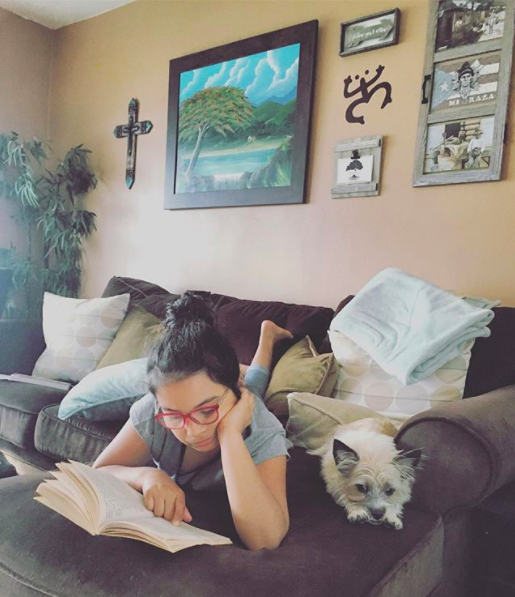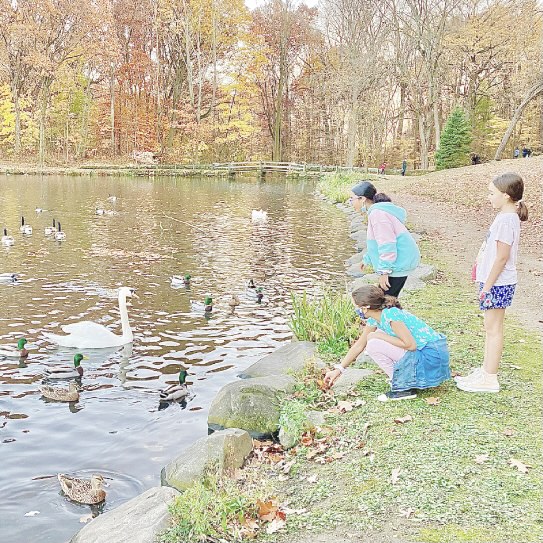Homeschooling an Only Child
Part 3: CM Education
in the Home

“Parents are the instruments, but they are not to be the all in all. Room must be left for some independent action, for many an unsuggested impulse, for self-reliance, for temptations and trials, with their natural results of victory
with self-respect or defeat with remorse."
The Parent’s Review (Volume 12, 1901)
As I mentioned in Part 2 of our series, two fabulous articles I highly recommend for further reading in educating only children are “The Lessons of an Only Child” by Antonella Greco and “The Education of an Only Child” by Mrs. Clement Parsons.
“The Education of an Only Child” was an article printed in The Parents Review* in 1901 and edited by Miss Mason. Yet, so much of what is said concerning educating an only child is still relevant today, like not being an overprotective mom or not allowing bad habits to form at home.
But for this post, I’ll focus on some of the article’s recommendations on implementing a Charlotte Mason education with an only child and how it looks in our home.
(Please Note: I share examples from our homeschool as an encouragement and to inspire new ideas for anyone in need of them. This is not an exhaustive list and there are other ways to provide educational opportunities and growth for your single student.)
Handicrafts
“Every only child should be taught the technique and given the outfit of a handicraft or two. These cheerful activities will take him out of himself, and make him happy, and they will also lay the foundation of his becoming later that welcome creature, a man with useful hands, who can do something in an emergency. Everyone would be better for knowing practically how to do the humblest things, laying a fire, for instance, or mending a blind-cord.”
When I first started learning about Charlotte Mason, I kept hearing the word “handicraft” and I assumed they were about fun crafts, which I was cool with since I have a super creative child. But the more I read, the more I understood that handicrafts were more than just a craft. It was about enriching the child’s life with skills that make life more beautiful. It was also about learning life skills that are useful and practical. It’s about learning and creating with purpose.
Teaching your child to sew, mend clothes and create hand-sewn gifts are a great example of this. Watercolors, gardening, knitting, cooking and the list is really limitless. But like the article tells us, it’s teaching your only child a life skill that brings joy, combats idleness as well as loneliness, and helps them be useful, whether now or in the future.
Community Service
“Another corrective of the characteristic “onliness” of the only child is to let him know something familiarly of the children of the poor. To stay a week or ten days with his nurse’s people in the green and flowerful country, is a broadening experience for your only boy. Insight into real life from a new angle is the most precious piece of knowledge that can come to any of us, and it is more precious to the only child than to anyone else.”
Again, we’re most likely not going to have our child stay at someone else’s home for 2 weeks who’s not grandma. And most of us don’t have a “nurse” caring for our child. But what we do have in common is what Jesus said we will always have with us: the poor. There will always be the needy and the disenfranchised for us to serve.
Community Service enables our only child to think outside of their world. It allows them to see how we can serve others the way Jesus served people and to have compassion on them the way Jesus did. The more your child thinks of others, the less he or she will think of themself. Your church and other non-profit organizations provide such opportunities for your child to partake in, which may lead to more positive group interactions.
Be Out in Nature
“Next to the remedy of “onliness” of being much with other children in his and their home life, I should place in the education of an only child a large measure of being out in the country, with all the delightful interests the country suggests.”
Not all of us have the luxury to be out in the country often but this sure sounds like nature walks to me. Even if you’re in the city like us, simple nature walks around the neighborhood bring us all, student as well as teacher, to a place where God can speak to us through His creation. It’s a place where, just like with community service, our child can see a world greater than his or her own smaller one at home.
Self-Independence is a Must
“The parents of an only child do well to resist the temptation to have their child continually with them. To be continually with his parents is not for the child’s good—let alone the parents’! For one thing, there is the danger of his being shown and told everything and left to find out nothing. I do not believe that anybody would be the better for an exclusive association with intellectual superiors. The poorer mind may not be of a nature to be over-excited and overwrought; but in that case another evil arises: it is led to adopt its opinions instead of thinking them, and finds a short cut to points to which it would be better it should fight its way. Clever, positive-minded people ought particularly to beware of letting their children grow into forlorn parrots of themselves. The truth is that there is one path to wisdom, and only one—the path of thought—whoever gets your only child into the habit of thinking will have put him in the way of a liberal education.”
This is where we as parents have to be very careful. When you only have one child, you have more time to focus on them. In fact, they sometimes have all our attention, which can become overwhelming and even paralyzing. We are tempted to do so much for our only child but enable them in the process. We do not want them to be mini-replicas of ourselves that mirror our every thought and action. God has created them to be the unique person He designed them to be, to have their own thoughts and ideas.
“Parents are the instruments, but they are not to be the all in all. Room must be left for some independent action, for many an unsuggested impulse, for self-reliance, for temptations and trials, with their natural results of victory with self-respect or defeat with remorse. Take off sometimes “the bridle and the blinkers” and set the child on “the barebacked horse” of his own will. By such treatment, his moral nature being amply exercised will be seasonably strengthened; and, when he comes into the world as a man, he will come with a man’s weapons of defence; whereas, if the child be constantly over-protected, he will come into the world a moral weakling.”
Ouch! I do not want my child to become a moral weakling as a result of my overprotection and “overhelp”. Ms. Mason often speaks on Masterly Inactivity, “a wise and purposeful letting alone” of children is the best part of education. Independent learning and thinking is a must for all kids. So as parents of an “only”, we must be even more intentional in allowing self-reliance and independent learning to happen.
Be Empathetic
“But we fall and rise again, confident deep down within us that somehow “the smooth” will ultimately “bloom from the rough”. As for the manner of approaching one’s child, of getting at him, there is but one rule: sympathise with him.”
Expressing empathy makes a HUGE difference. Empathizing with my only child, especially during moments of frustration, brings her to a place of reason and cooperation, and me to a place of understanding and compassion. There are moments that I have to remember she is often physically alone, away from other children, and she needs me to understand her longing to be with her peers, her lack of desire to do yet another lesson with just her mom or her annoyance at another “adult” convo she has to endure with her parents at dinner time.
As a result, I’m learning to be more creative, intentional and accommodating in our lessons. Here are some examples.
Free Reads:
Although my girl is old enough and expected to read on her own during her afternoon occupations, we read together. Now that she’s reading so many school books on her own, she expressed her disappointment over not reading with me any more (aside from Bible). Reading together has always been a wonderful bonding time. That touched my heart so her free read is mine too.
Recitations:
You have to know your child and what they enjoy. My daughter loves to be silly. As I mentioned before, she’s also very much on the creative side. As a result, she’s recited before dressed up as a character in a play. Other times, she’s had me record her reciting as she puts on an impromptu show.
Narrations:
Ah, narrations. What a challenge that has been! (But that’s another blog post…coming soon)
Here are some ways I’ve been advised to make narrations more interesting to my one student and they’ve worked:
- My daughter still plays with dolls and loves her stuffed animals (all 150 of them). So she chooses a doll or stuffed animal to narrate to. She LOVES that. Sometimes she even forgets to actually narrate to the toy but just having it there with her made her more enthusiastic about narrating.
- My girl easily narrates in a group setting but is a bit more reluctant to narrate alone (though she’s getting way better). So I act like the other classmate with her and narrate a portion of whatever we read together. I just make sure she always go first AND I try not to make my narrations long-winded (which she’s accused me of).
- I vary the narrations so every day my daughter has to give me an oral, written and drawn narration. But she chooses how she wants to narrate for each subject that requires it. One day she may draw a narration for her nature lore, give an oral narration for the Bible and write for history. Choice is very important to her so she enjoys selecting the narrations for each schoolbook.
- Written narrations were another struggle. My girl’s a writer. I mean she loves to write… just not when she’s asked to for school. The girl who would write pages of stories would give me about a 2 sentence narration for school. I’m working hard at not showing any disappointment or disapproval and trusting more in the Holy Spirit to do His work in her. Well, one day, she asked me if she could type her narration and, low and behold, her narrations were super detailed! So now I let her type when she wants.
Short Lessons
Miss Mason often stressed the importance of short lessons. She understood children and their limited attention span. This is really a secret weapon. Keep the lessons short and it makes the day flow better with limited frustration. Then, with an only child, your school day can be completed more smoothly and fairly quickly because your attention isn’t divided between multiple students.
A timer that my daughter and I could see (not my phone and not Alexa) made a huge difference for us in this area because we could BOTH keep track of time.
Miss Mason’s 1 Incentive
When I was an elementary school teacher, I used to offer a lot of incentives to my students like a pizza party if they all did their homework for a month or little gifts as rewards for positive behavior.
Charlotte Mason didn’t believe in rewards. She believed in natural consequences. So her 1 simple incentive was if a child finished their school work early, then they could use the rest of that time to do something they enjoy such as draw or play. For example, a math lesson is completed in 15 minutes and the lesson was set for 20, now the child has 5 minutes of free time. It also becomes a break for your student before the next lesson.
This incentive is not only inexpensive but it also helps them with time management. Even with the older kids, if they want more time on their hands, then they could just finish their lessons faster so they have the option of a break.
Now it’s not to teach your child to rush through their work because we still want them to practice the habit of perfect execution, to do everything in excellence. Instead, it’s to help your child work more efficiently with their habit of attention and keep track of time that comes with a perk.
When home educating an only child in a CM education, there’s more than enough room to be creative and understanding towards our one child who doesn’t have the positive peer pressure to motivate them.
I pray this 3 part series on homeschooling an only child is encouraging and helpful in your journey with your “only”!
*The Parents Review was a monthly magazine of home-training and culture that was sent to parents and teachers of Charlotte Mason’s schools between the approximate years of 1890-1920.




Pingback: Homeschooling an Only Child- Part 2: Group Interaction |
Pingback: Homeschooling an Only Child- Part 1: The Shame of “an Only” |
Awesome and amazing and HELPFUL series! Thank you so much. I have also felt the same shame of having an only child. And the feelings of inadequacy. Finding balance… thank God I happened upon your site. Doubt started to really creep in this month (and end of our third year of homeschooling). Thank you!